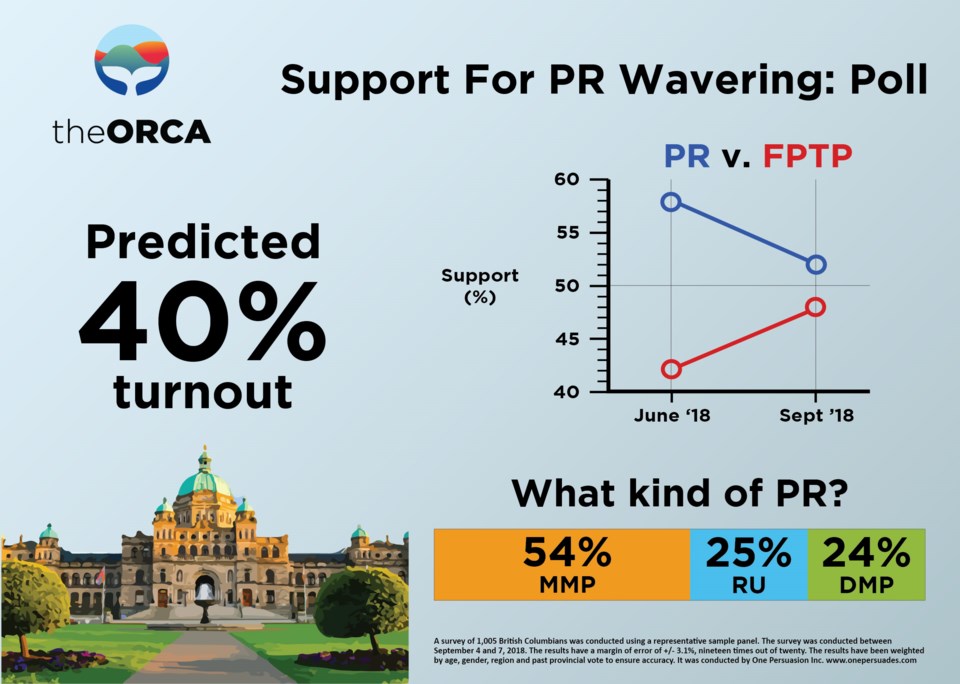Don’t look now, but we have a race.
As British Columbia’s referendum on electoral reform shifts into high gear, a recent poll done for The Orca indicates the Yes side has a slim lead – but that lead is narrowing, and slowly shifting towards No.
Among decided voters, the referendum is extremely close – with the proportional representation side leading 52% to 48% among decided voters, a massive shift over the summer. In June, the same pollster found proportional representation up 58% to 42%, meaning 12 points have been shaved off the reform lead.
In fact, of those who said they would definitely vote, the No side now has a slim lead, 44% to 40%.
An even bigger shift is the growing number of undecided voters, who seem to be moving away from the Yes side, almost exclusively. In June, 16% said they were undecided; and 27% now.
Actual turnout is more difficult to predict. On a scale from 0 to 10 – where 10 means “absolutely certain to vote” – 50% of respondents said they were 10 out of 10. According to One Persuasion, this predicts a turnout of approximately 40%.
By contrast, B.C.’s most recent electoral reform referendum in 2009 – held at the ballot box in conjunction with MLA elections – saw a turnout of just over 55%. More recently, Prince Edward Island held a non-binding referendum on electoral reform in 2016, with a turnout of less than 37%.
The poll indicates that likelihood to vote in the referendum increases with age, income, and education. Region is less of a factor, though voters in Vancouver and its inner suburbs (minus Surrey) were least likely to say they would definitely vote.
The poll also revealed that most British Columbians haven’t paying close attention to the referendum campaign, with 61% hearing either “not very much” or “nothing at all” in the last few weeks before the poll was conducted.
Should a majority of those who vote (not a majority of voters) vote Yes, the poll indicates Mixed Member Proportional Representation is far in the lead, with over half of voters and “10 out of 10” voters indicating it would be their first choice of the three options on the ballot.
Support for keeping the current First Past the Post voting system is highest in Surrey and the Fraser Valley (40%, a 14-point lead over proportional representation) and Interior (36%, a 3-point lead), and lowest on Vancouver Island and the Coast (27%, trailing proportional representation by 22 points.)
Unsurprisingly, the referendum is split across party lines.
61% of those who voted BC Liberal in the 2017 election said they would vote for the current system. 56% of both NDP and Green voters, respectively, indicated they would vote for proportional representation. Approximately a quarter of each party’s support base remains undecided.
The survey, done on behalf of The Orca by One Persuasion Inc., of 1,005 British Columbians was conducted using a representative sample panel, between Sept. 4 and 7, 2018. The results have a margin of error of +/- 3.1%, nineteen times out of twenty. The results have been weighted by age, gender, region and past provincial vote to ensure accuracy.
Maclean Kay is the Editor-in-Chief of The Orca



